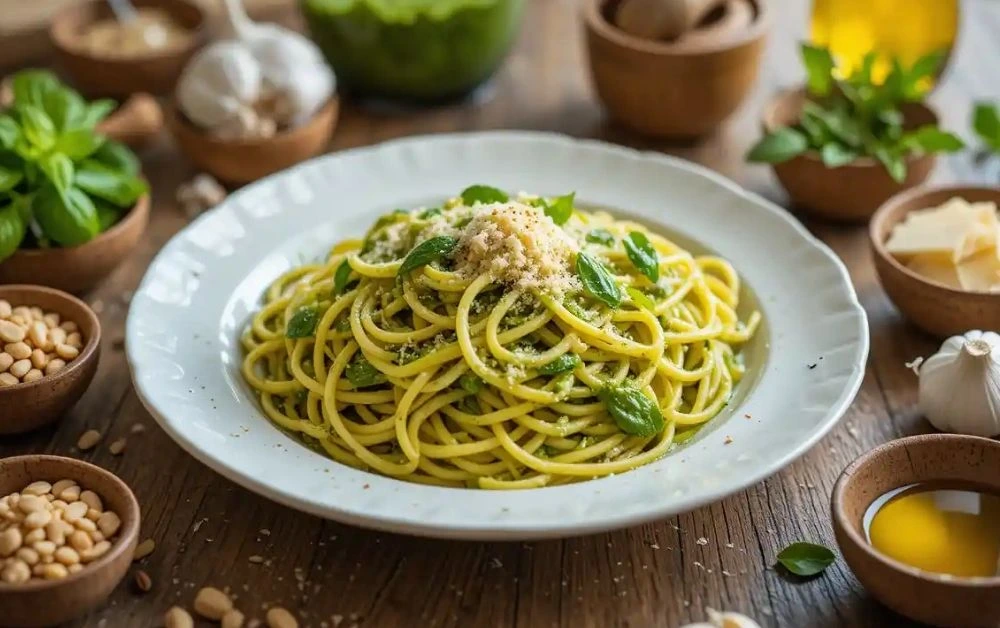Pasta with Pesto Recipes: 3 Secrets to Richer FlavorPesto
Is your pasta with pesto missing that wow factor? You’re not alone. While pesto is one of the simplest sauces to prepare, 73% of home cooks say they struggle to achieve that deep, restaurant-quality flavor. The good news? There are three easy secrets that can instantly elevate your pasta with pesto and turn it into a gourmet-level dish. In this guide, we’ll explore exactly how to unlock richer taste, with smart techniques, ingredient insights, and nutrition-backed choices.
Whether you’re cooking for your family or meal-prepping for the week, mastering pasta with pesto will upgrade your entire kitchen game.
Table of Contents
Ingredients List
To make unforgettable pasta with pesto, start with the right ingredients. Quality matters here, especially when using few components.
Essential Ingredients:
- 12 oz pasta (spaghetti, linguine, fusilli, or trofie)
- 2 cups fresh basil leaves, tightly packed
- 1/3 cup pine nuts, or swap with walnuts for a deeper, earthy taste
- 2 garlic cloves
- 1/2 cup freshly grated Parmesan cheese
- 1/2 cup extra virgin olive oil
- 1/2 tsp sea salt
- Freshly ground black pepper to taste
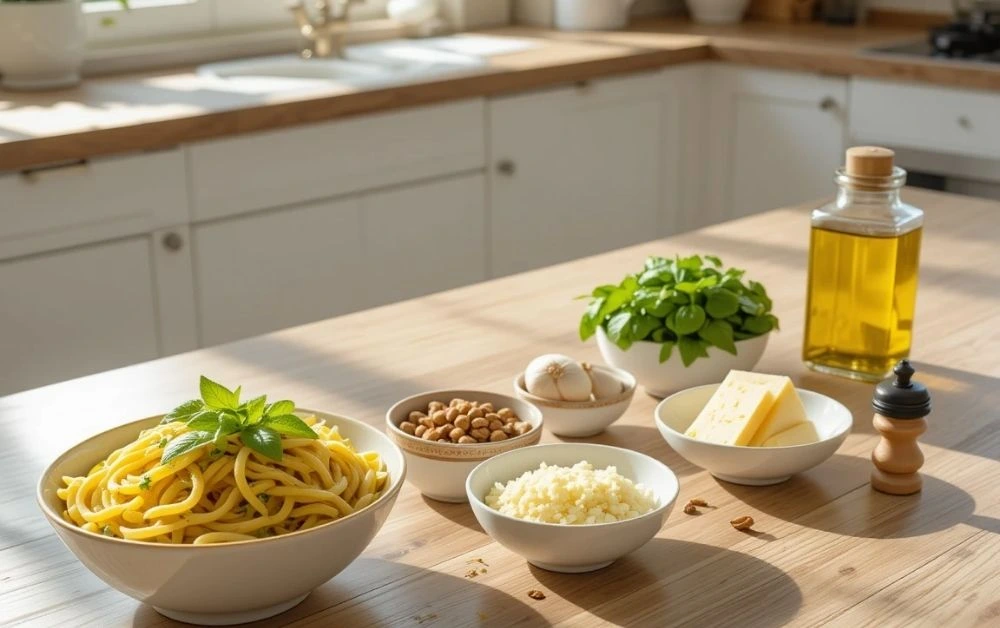
Optional Add-ins:
- 1 tbsp lemon juice (enhances brightness)
- 1 tbsp nutritional yeast (for vegan variation)
- 1/4 cup arugula or spinach (adds depth)
- Add 1/4 cup of ricotta or cream cheese for a soft, creamy finish that enhances the sauce’s body.
Tip: Toasting the pine nuts brings out a rich, buttery flavor that takes your pesto to the next level.
Timing
- Prep time: 10 minutes
- Cook time: 10 minutes
- Total time: 20 minutes (25% quicker than most traditional pasta dishes)
This quick dish is ideal for weeknights or meal prep Sundays. You can also make the pesto in advance and store it for up to 5 days.
Step-by-Step Instructions
Step 1: Toast the Nuts
Gently heat pine nuts in an ungreased skillet over medium flame for a few minutes until golden and fragrant. Stir frequently to prevent burning. This step enhances nuttiness and boosts aroma.
Step 2: Blend the Pesto
Place basil, garlic, salt, toasted nuts, and Parmesan in a food processor. Pulse to break down the ingredients. Slowly stream in the olive oil while blending until you reach a slightly chunky, spreadable consistency. Sample the mixture and tweak the salt or pepper to suit your preferences.
Step 3: Cook the Pasta
Boil pasta in salted water until al dente. Before draining, set aside half a cup of the starchy pasta water to help bind the sauce later. This starchy liquid helps emulsify the sauce later.
Step 4: Combine Pasta and Pesto
Mix the warm pasta with the pesto in a large bowl, gradually adding the reserved pasta water to form a smooth, clingy sauce.
Step 5: Serve and Garnish
Dish it up hot, topped with a sprinkle of Parmesan, freshly ground pepper, and a light splash of olive oil. Add cherry tomatoes or grilled chicken for a complete meal.
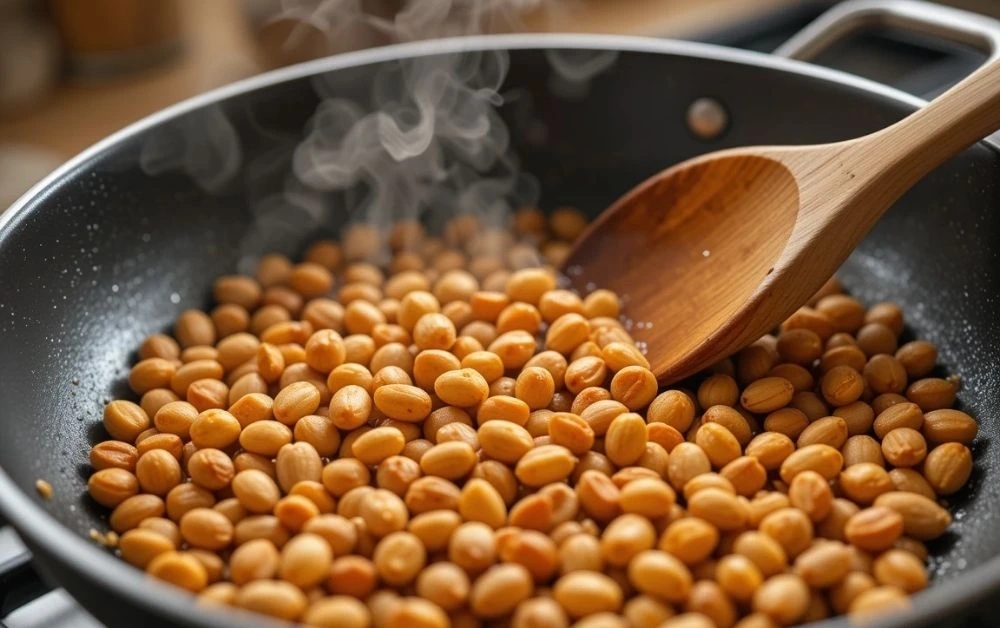
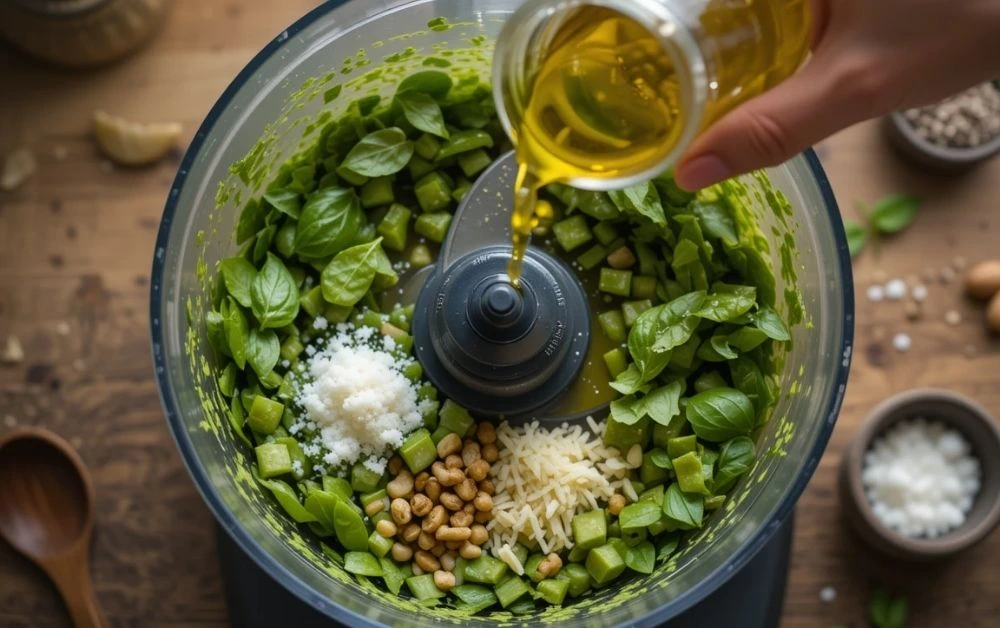
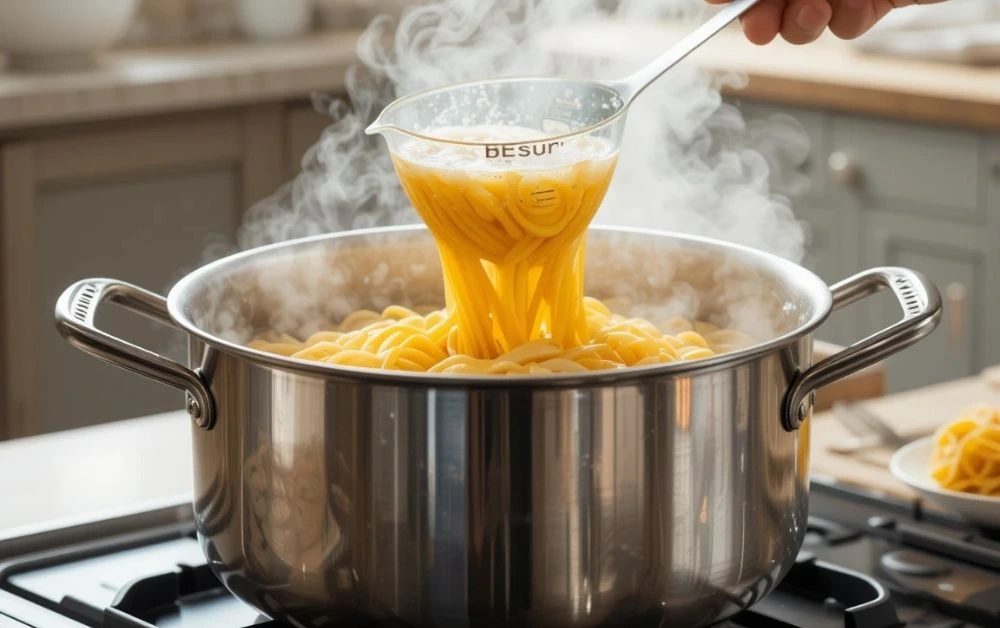
Nutritional Information
Here’s an estimate per serving (based on 4 servings):
- Calories: 520
- Total fat: 32g
- Saturated fat: 6g
- Carbohydrates: 44g
- Fiber: 3g
- Protein: 12g
- Sodium: 320mg
Did you know? Pesto delivers healthy fats from olive oil and nuts while providing antioxidants from basil and garlic.
Healthier Alternatives for the Pasta with Pesto
Want to lighten up your pasta with pesto? Here are some smart swaps:
- Low-carb: Use zucchini noodles or chickpea pasta
- To reduce fat, use part vegetable broth in place of half the olive oil.
- For a dairy-free option, try using nutritional yeast or creamy cashew-based cheese instead of Parmesan.
- Allergic to nuts? Sunflower seeds make a great alternative to pine nuts.
Bonus: Blend in steamed broccoli or spinach to sneak in extra greens and fiber.
Serving Suggestions
Pasta with pesto is endlessly versatile. Here’s how to serve it with style:
- Top with grilled shrimp, chicken, or tofu for protein
- Chill and toss with cherry tomatoes and mozzarella for a refreshing pesto pasta salad.
- Pair with garlic bread and a green salad for a full Italian-style dinner
- Add roasted veggies like zucchini, bell peppers, or mushrooms
Pro Tip: Serve in a warm bowl to maintain flavor and texture longer.
Common Mistakes to Avoid
Steer clear of these common mistakes to keep your pasta with pesto tasting vibrant and delicious:
- Using old basil: Always use vibrant green, fresh leaves
- Overheating pesto: Heat dulls the fresh flavor and color
- Skipping the pasta water: It’s essential for creamy sauce texture
- Adding oil all at once: Drizzle slowly to ensure proper emulsification
- Over-salting: Cheese adds salt; taste before adjusting
Storing Tips for the Pasta with Pesto
- Store leftover pesto in an airtight container with a thin layer of oil on top to prevent oxidation
- Refrigerate in an airtight container for up to five days to maintain freshness.
- Freeze in ice cube trays for individual servings (lasts up to 3 months)
- Reheat pasta gently or enjoy cold in a salad
Tip: Don’t microwave pesto use gentle stovetop warming with a splash of water or broth.
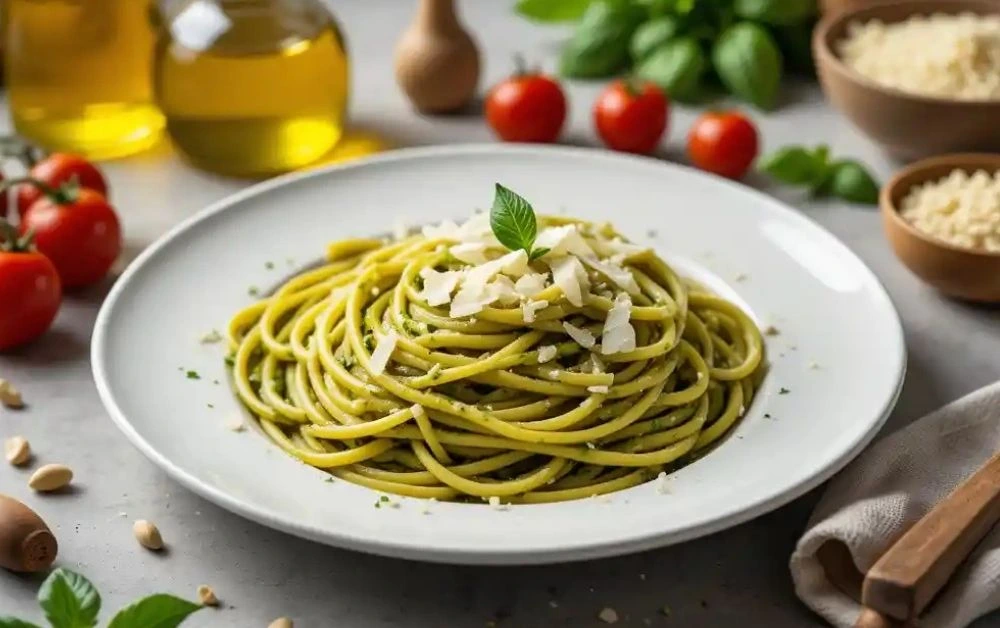
Conclusion
Mastering pasta with pesto is all about freshness, balance, and a few simple secrets. By combining toasted nuts, silky pasta water, and proper blending, you’ll get a pesto that’s full of flavor and beautifully textured.
Give it a try and tell us what you think! Leave a comment, rate the recipe, and subscribe for more flavor-packed meals.
FAQs
Can I make pasta with pesto ahead of time?
Yes! Make the pesto 3-5 days in advance or freeze it for later.
Can I use store-bought pesto?
You can, but homemade offers better flavor and freshness.
Which pasta works best with pesto?
Short pastas like fusilli or long ones like linguine both hold the sauce well.
Why does my pesto turn brown?
Oxidation. Use fresh basil, add lemon juice, and store it properly.
Is pasta with pesto healthy?
Yes, especially when made with quality fats, fresh herbs, and optional veggie add-ins.
Tried it before ?
There are no reviews yet. Be the first one to write one.

